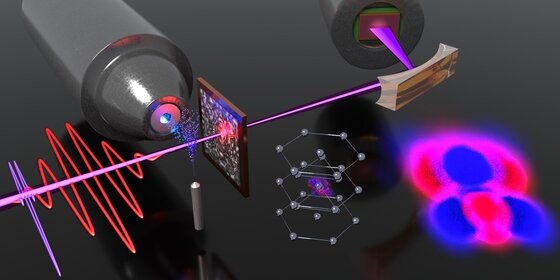Electron Energy Loss Spectroscopy
Electron Energy Loss Spectroscopy (EELS) is a technique that provides elemental information on the nanometer scale when coupled with Transmission Electron Microscopy (TEM) and Scanning Transmission Electron Microscopy (STEM). The energy of the incident electrons is altered (reduced) as they pass through the sample. This energy loss can be characterized using EELS to provide elemental identification. Compared to Energy Dispersive X-ray Spectroscopy (EDS), EELS provides improved signal to noise, better spatial resolution (down to 1 nm), higher energy resolution (<1 eV for EELS) and increased sensitivity to the lower atomic number elements. For some elements, chemical bonding information can be obtained.

Ideal Uses of EELS
- Elemental identification and mapping
- Elemental identification (spot analysis, linescans, 2D chemical maps)
- Chemical fingerprinting (limited cases)
Strengths
- More signal collection than EDS
- Especially useful in the Si/C/O/N system
- 1 nm probe size (EDS ~1-3 nm)
- Higher energy resolution, can sometimes provide chemical information
- Higher sensitivity to Low Z elements
Limitations
- Longer to set up
- Multi element detection sometimes requires multiple set ups
- Backgrounds and peak shapes are complicated
- Good detection of High Z elements can be problematic
EELS Technical Specifications
- Elements Detected: B-U
- Detection Limits: 0.5%
- Lateral Resolution/Probe Size: 1 nm
